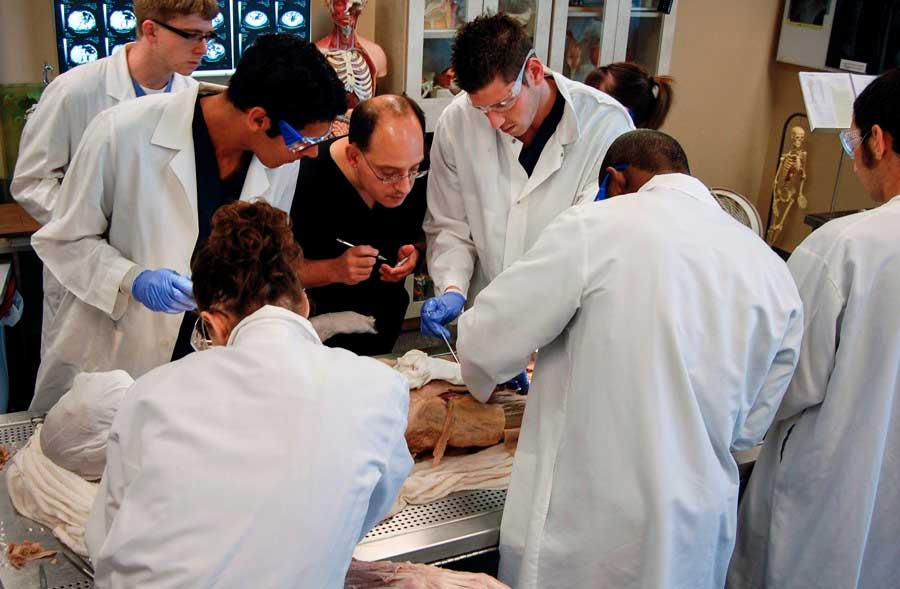
When we die swarms of bacteria lurking in the soil, on the living room floor, on the street, and in our own bodies help reduce our corpses to a putrefying and unidentifiable mess. But a growing number of entomologists believe innumerable clues about the life of a person, and how and when they died, live within that bacteria, known collectively as the necrobiome.
Researchers believe that studying microbial successions, or the sequence in which microbial communities in a corpse proliferate over time, will enable them to narrow down the window of death, explains writer Peter Andrey Smith, in a recent article in the New York Times Magazine. The article is entitled “The Living Dead.”
This is the holy grail of forensic pathology, says one entomologist quoted in the article. This is because time of death is often used as a key piece of evidence in trials of murder cases, to either implicate or exonerate an individual. If investigators could know exactly when someone died, they would have a much more accurate understanding of who may or may not have been at the crime scene to commit the crime in the first place.
“Because these successions appear to be highly predictable, microbes function as timekeepers and trace evidence,” writes Smith. “Death may stop one biological clock, but another one keeps ticking.”
Perhaps most stunning of all is the idea that the micro-organisms that feed on corpses literally blanket the earth. “When a person dies,” writes Smith, “the body begins to digest itself, and these mysterious organisms rapidly emerge and assemble on decomposing mammal flesh.”
Or, as Steven Allison, a microbial ecologist at the University of California, Irvine reported in a recent article in The Atlantic on the same topic: “Dead animals are big, concentrated blobs of protein and fat, and these microbes are lurking in the soil ready to start eating our bodies when we die.”
What is stunning about the microbial succession that takes place on a decomposing corpse is that the process of decomposition itself ensures that the host environment for these bacteria is continually changing. “Micro-organisms living in the body migrate and adapt almost immediately to the lack of oxygen and the breakdown of the immune system,” writes Smith. “The sequence is rapid: Bacteria infiltrate the liver within 20 hours and spread to the heart and other organs in less than 58 hours. Anaerobic bacteria in the intestine can double in less than 10 minutes and eventually cede their territory to oxygen-loving organisms when the stomach ruptures.”
Another interesting note, different organs decompose at different rates. Apparently, bodies that have been decomposing for days often still contain intact hearts, lungs, livers and kidneys. But, “you open the skull,” Carl Schmidt, a Detroit medical examiner, told Smith, “and the brain has turned into pea soup…Even when their abdominal organs are recognizable…the brain has liquefied.”
“What drives that?” Schmidt wonders. At this point, no one seems to know exactly.
Schmidt, whose office handles nearly 2,000 autopsies a year, knows his way around a corpse. And having seen so many of them, he has noticed trends, which also seem to play out with the bacteria. “Drug deaths appeared to harbor distinct communities of microbes compared with deaths by natural causes,” writes Smith.
There also appear to be bacterial differences between homicides and suicides. This “could stem from the chronic depression that preceded a suicide or the sudden spike in adrenaline in the moments before a homicide,” says Smith. “The victim of a homicide more often receives medical care at a hospital before dying than does someone who commits suicide.”
But apparently this topic is not for everyone.
“I read as much of this article as I could stomach,” wrote a commenter named Carole, on the New York Times article. “I assume it is necessary to fix the exact time of death in some cases. I know this is science. I do not know how any normal human being can make a career out of inspecting and dissecting dead bodies. The smell of death is horrendous and the thought of my own body decaying is not something I care to dwell upon. How can these people do this? How?”
Follow Funeralwise on Facebook, and author Justin Nobel on Twitter.
Necrobiome Resources
- The Atlantic: Meet the Necrobiome: The Waves of Microbes That Will Eat Your Corpse
- The Scientist: The Necrobiome
- The New York Times: The Living Dead









